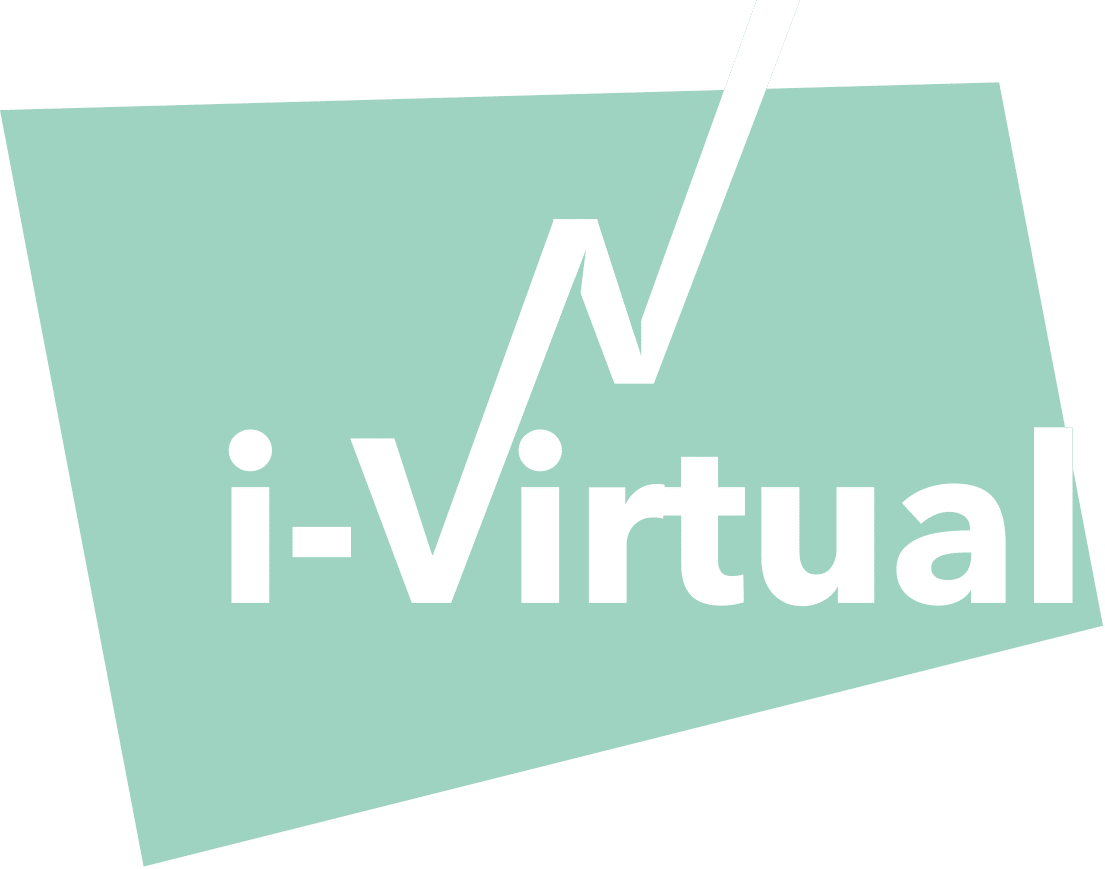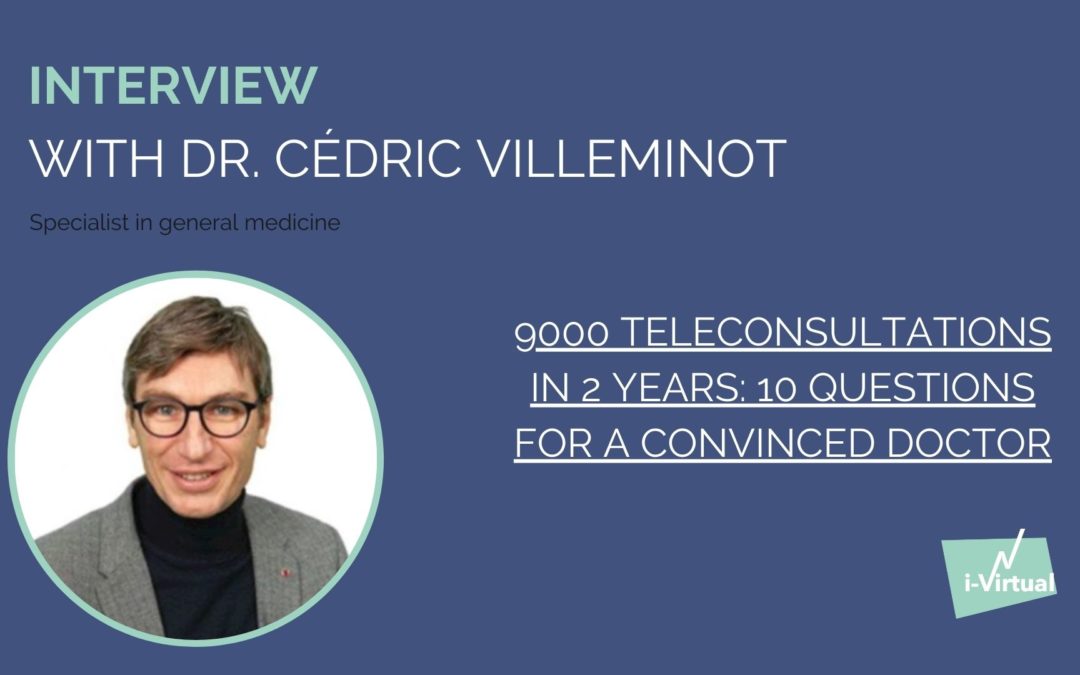Interview with Dr. Cédric Villeminot
General practitioner based in Annecy, Dr. Cédric Villeminot is passionate about e-health. Devoted to his patients, he gave his precious time to Myriam Benfatto to talk about teleconsultation. Discover below the result of the exchange and the explosive answers of a convinced doctor.
1/ What drives you to be so committed to teleconsultation?
A definite taste for e-health! I have been convinced for a very long time that new technologies are sources of quality care and can greatly contribute to solving the current quantitative problem (medical demography, ever-increasing demand). I am convinced that we must commit to a transformation of our practices by “finally” highlighting the aspect of prevention rather than curative… without forgetting the interest of reinvigorating oneself in the middle of a career, with a wish to question oneself, to get out of one’s comfort zone, to progress, rather than sticking to obsolete achievements!
2/ How long do you spend on average per teleconsultation?
Between 15 and 20 minutes, exactly like face-to-face, no more, no less. Since the clinical examination is not “yet” possible remotely, I compensate by talking, listening, empathy with my patients. In the office, the doctor, often overwhelmed, does not always have the time to be able to talk as much with his patients. This is truly the unrecognized strength of teleconsultation… Unlike what professional opinion too often thinks, teleconsultation brings back a human relationship sometimes forgotten during our “physical” consultations.
3/ Does teleconsultation allow you to better monitor your patients?
The teleconsultations will allow a better follow-up of our patients… in the long term!
We cannot say that it is currently the case. But it will be, I am convinced of it. Thanks to Medical Devices, smart devices, automatic data collection and even instantaneously in “MES-Mon Espace Santé”, thanks to the future interoperability of our patient management software, with the support of AI and probably new professions (delegation of tasks) which will allow us to be alerted.
Thus, we are going to become “augmented doctors” (I love this notion!), we will finally be able to take on our full role as medical engineers, by putting our expertise and our medical experience at the service of our patients! This is how teleconsultation and telemedicine in a more general way can make it possible to “better follow” our chronic patients… because that’s the whole point.
Teleconsultation, currently, can largely respond to situations of acute pathologies, and can play a large role in the management of PNS. Its role in the management of chronic patients is still limited, but the future will prove its power on these pathologies!
4/ Where are your patients geographically?
I am located in Haute Savoie. The patients I receive in teleconsultation come from all over France, but not only.
Initially, it was mainly patients from Ile-de-France, then the big cities, but today my patients come from everywhere … and when I say everywhere, I add: Reunion, The Antilles, Mayotte, La Guyana, New Caledonia, Spain, Denmark and Sweden! Almost all of them are insured patients in France, but we have a few foreign patients: we receive them with exchanges in English (for me), which makes it easier to understand their pathologies. Some of my colleagues also teleconsult in German, Spanish, Italian, Arabic, and even Chinese, depending on patient requests. It also contributes to making us doctors who question ourselves and who have a much more open mind than in our practices.
5/ Does teleconsultation improve your quality of life as a doctor ? What about saving time?
The answer is of course a big YES ! It is not necessarily in “saving time” that we must reason. At first glance, teleconsultation may appear as a “Cash machine”. But we must deviate from this vision… Teleconsultation allows, on its own patients, depending on the reasons for consultations, to “outsource” certain expertise. After having received a patient in the office for a clinical assessment with complete physical examination, which gives rise to additional examinations, why not “assess” his analysis and imaging results remotely ? It is a comfort for the doctor who practices from home (or elsewhere!). The world is changing, transforming, with the health situation of covid 19, the world has understood that we can ALSO carry out many tasks from home ! Why wouldn’t medicine be part of it ? You have to live with the times !
The patient can also save precious time in his day and not force the doctor to stay very late in his office, away from his family, just because the patient is in traffic on his way home from work and cannot come before… for a non-urgent appointment!
A little ecology also does not hurt either, since round trips by car are avoided thanks to teleconsultation.
In short, one very important thing: the quality of life of a doctor does not necessarily lie in financial gain, but much more in moral well-being, by being closer to his loved ones… The doctor’s morale will not be affected. Only better, thus, he will be much more attentive and therefore at the service of his patients whereas until now, the doctor has the image of an overwhelmed person, always in excitement and haste… deleterious to the quality of care ! Slow working is good, especially when it comes to health. In general medicine, taking your time, being able to be freed from constraints (administrative, since teleconsultation platforms often allow you to be freed from administrative and financial tasks), this is the key to improving the doctor’s quality of life !
6/ Does teleconsultation improve your income as a doctor?
I believe I have answered the previous question: NO, not necessarily. And in my opinion, this should not be a criteria that pushes a doctor to change. Once again, teleconsultation, if we want to make it qualitative, must not be a “cash machine” otherwise it will be discredited… and the unions of General Practitioners as well as the Council of the Order will jump at the chance, by their legendary archaism, to oppose this transformation of our exercise.
7/ How do you divide your in-office and teleconsultation consultations?
So far, with the covid crisis, it has been 90% teleconsultation and 10% consultations in the office. In my dreams, it would be 50% / 50%. In fact, it will be more complex from the month of April due to the agreement and the texts signed by the MG unions with the CNAM, since amendment 9 stipulates that: we must promote telemedicine which has made its evidence, and, for this, its use should be limited to a maximum of 20% of the practices of liberal doctors…
Find the mistake ??? if this is not done to try to stop the progression of teleconsultation, then what is this amendment for?
8/ Do you encounter any obstacles with teleconsultation?
Reluctant colleagues: There are a large number of colleagues, of all ages, who consider teleconsultation as a “low cost” care for patients, brandishing the risks of missing out on “serious pathologies” for which only a clinical examination could guide the diagnosis. … It is then to forget that a study published in 2021 showed that diagnoses in general medicine are established in 70% of cases on clinical questions, 25% by additional examinations (biology, imaging) and 5.7% by clinical examination! Therefore, how can we not imagine the interest and all the place that telemedicine can and must occupy in the medical field today.
This practice is therefore essential.
Ergonomics/equipment: To date, teleconsultation is accessible to all health professionals, even without great knowledge of digital tools. On the patient side, a simple smartphone is enough. The future of course lies in the combination of AI, smart device and medical devices which will allow an even better support. Innovative solutions, very simple or even “invisible” for the patient already exist, in perpetual development and improvement, and provide the practitioner with essential elements for diagnosis (i-Virtual is a perfect example with its solution Caducy), and therefore allow (or will allow) to take care of pathologies that are complex to manage today by teleconsultation and will become routine use tomorrow, because they are framed in good medical practices.
9/ Which pathologies cannot be monitored by teleconsultation?
Traumatology which requires a physical examination. Certain pathologies such as urinary tract infections in men, or “complicated” urinary tract infections in women, ear infections, pneumopathies… everything that will require pulmonary, cardiac or otoscopy auscultation to date. But tomorrow ? We will necessarily have smart devices that will allow us to take care of these pathologies by teleconsultation.
In general, everything that will be of the order of pathologies presenting criteria of “severity”. But, if we reason well, just to think that it could be a pathology that we cannot take care of by teleconsultation, is that teleconsultation already has an interest… since that already makes it possible to “sort” unscheduled treatments, emergencies or not!
10/ How do you see teleconsultation in 10 years?
Teleconsultation will be included in our daily practices, how can we imagine it otherwise? Moreover, even if it is not us, health professionals who will propose it, the patients, much more imaginative and demanding, will have transformed us! The younger generation is already in the future! It is also up to us now to bring some young people to their senses, so that they agree to come back for physical consultation because some have not seen a doctor in person for several years.
I imagine teleconsultation in 10 years, much more like teleexpertise of health data, constants provided by smart devices, and/or semiological analysis of clinical examinations carried out by APNs (advanced practice nurses). The idea is to say that the doctor is to medicine what the engineer is to industry… the nurse is the technician… the APN the “superior” technician. A technician “costing” much less than an engineer. AI can largely replace many of the analyzes and expertise of engineers, but it will always be necessary to take medico-legal responsibility. In my opinion, the current medical demographic “shortage” (which was desired and desired, and even “organized” by the unions and the Council of the Order of Physicians… because everything that is rare… is expensive!!!) , will not be a problem for patient care in the future.
It is also necessary to integrate the fact that for several decades, everything has been organized on the principle that the doctor was at the center of the care of a patient. However, the “consumption” of care by patients today redistributes the cards, and places the patient at the center of the system. His file at the heart of the care (Mon Espace Santé) is a total paradigm shift which has the consequence of forming a care team around the patient and no longer the opposite! Exit the “treating doctor”, hello “the treating care team”. In fact, the patient is an actor of his health.
The doctor becomes a care operator, in charge of analyzing health data. Far from dehumanizing the patient-doctor relationship… it is quite the opposite that happens, since, after expertise, it is the human relationship that takes precedence for the announcement of results, and therapeutic proposals. Teleconsultation finds its place and is therefore part of this care approach. All this goes in the direction of improving qualitative and quantitative management, through prevention…
And to improve teleconsultation? Simplicity, fun for the patient, integrated into an existing solution, running in the background, fast, “secure”, providing valuable information, constants of course, which could be automatically transferred to “MES”…?

